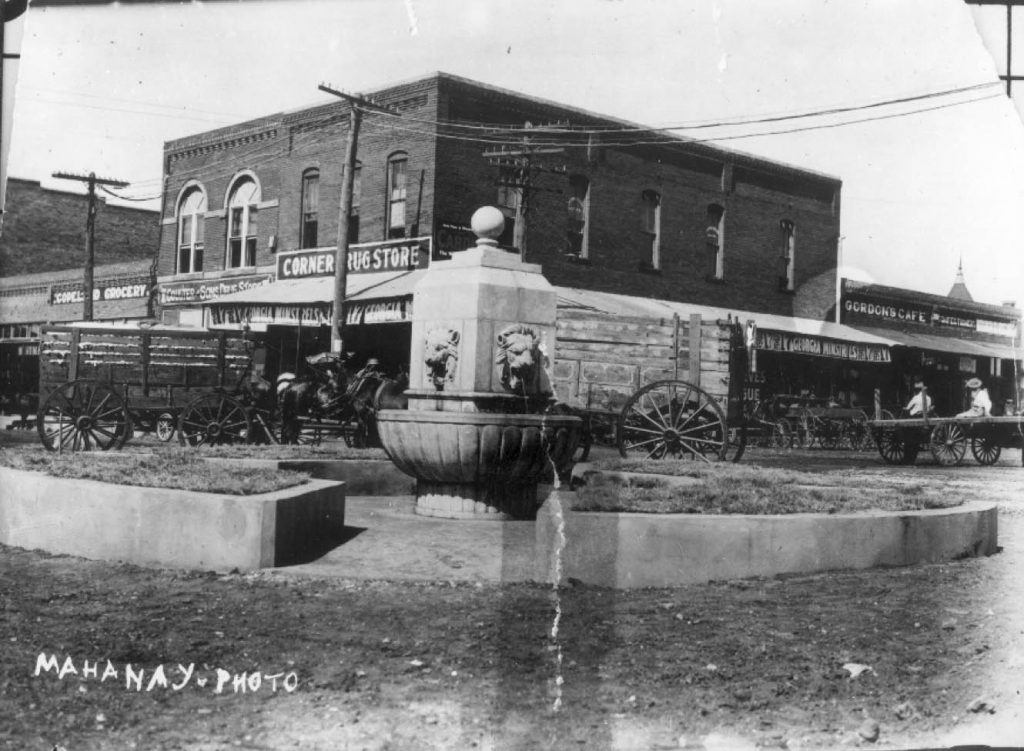History of the Fountain

It was in 1892 that R.W. Collins’ completed his dream to drill a well in the middle of Arlington. To the dismay of the town, the water from this 1,800 foot well was rancid. In the attempt to salvage his dream, Collins’ built a wooden trough around the well so that the public could water their livestock. Nearly twenty years later, it was discovered that the water’s taste came from its high concentration of minerals and a stone fountain was sculpted around the well. People flocked to Arlington from the surrounding countryside and cities just for a couple drinks of the “cure-all” water that now poured from the mouths of the sculpted lion heads. People would drink this water for anything from headaches to freckles to the whooping cough. Local historian, Dorothy Rencurrel described this phenomenon saying, “The people who were trying to sell it for medicine said it cured everything, whether it did or didn’t. Actually, it was good for you.” Whether this water phenomenon was myth or fact, people continued to go out of their way to get a drink from this newfound fountain of youth.
Next came a business venture to make the most of the raw minerals it contained. In the early 1930’s, Gilbert Luke took his wife and two brothers and moved from Mineral Wells, TX to Arlington to start what would become a highly profitable crystal plant. Luke once explained that normally about 16 gallons of water was required to create a pound of crystals, but with the mineral rich water from the Arlington well they only needed about 8 gallons to create a pound of crystals. Business was booming for the Lukes, at the peak of their success they were selling near 2,000 pounds of crystals daily. Unfortunately, their success caught the eyes of the Federal Drug Administration which proceeded to slap regulations on the company. The Lukes invested their money into Luke Pontiac, thus ending the era of the crystal city.
The dream of R.W. Collins would come crumbling down when the well was condemned and torn down. Mayor Tom Vandergriff decided that, due to the fountain’s location in the middle of center street between the central library and city hall, combined with the booming traffic of the time, the fountain had to go. Thus, in 1951, the fountain was closed, removed at ground level and paved over. The well had long been a place of social gathering for the old and young alike, it was difficult for many to see this place removed.
During the City’s centennial celebration in 1976, a monument to the fountain was erected. Mayor Vandergriff was one of the greatest benefactors of the fountain’s memorial. The memorial is made up of several stone columns with the three tallest holding metal plaques dictating the three stages of the well’s history. The memorial was originally on the grounds of the Central Library at Abram and Center streets and now is located at the Levitt Pavilion at 505 E Border St.
Information gathered from: The Arlington Morning News, Reflections 200, 1900’s Arlington Looks Back edition, February 14th, 1999; The Daily News, October 10th, 1976; Pictures from the University of Texas at Arlington’s Digital Gallery.
